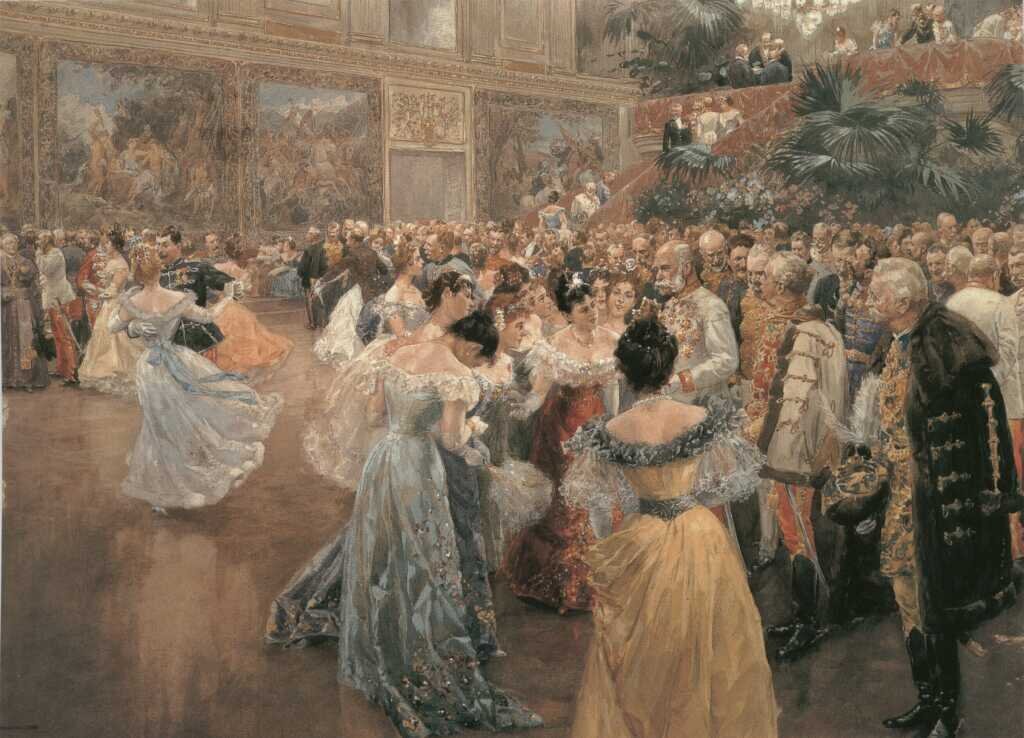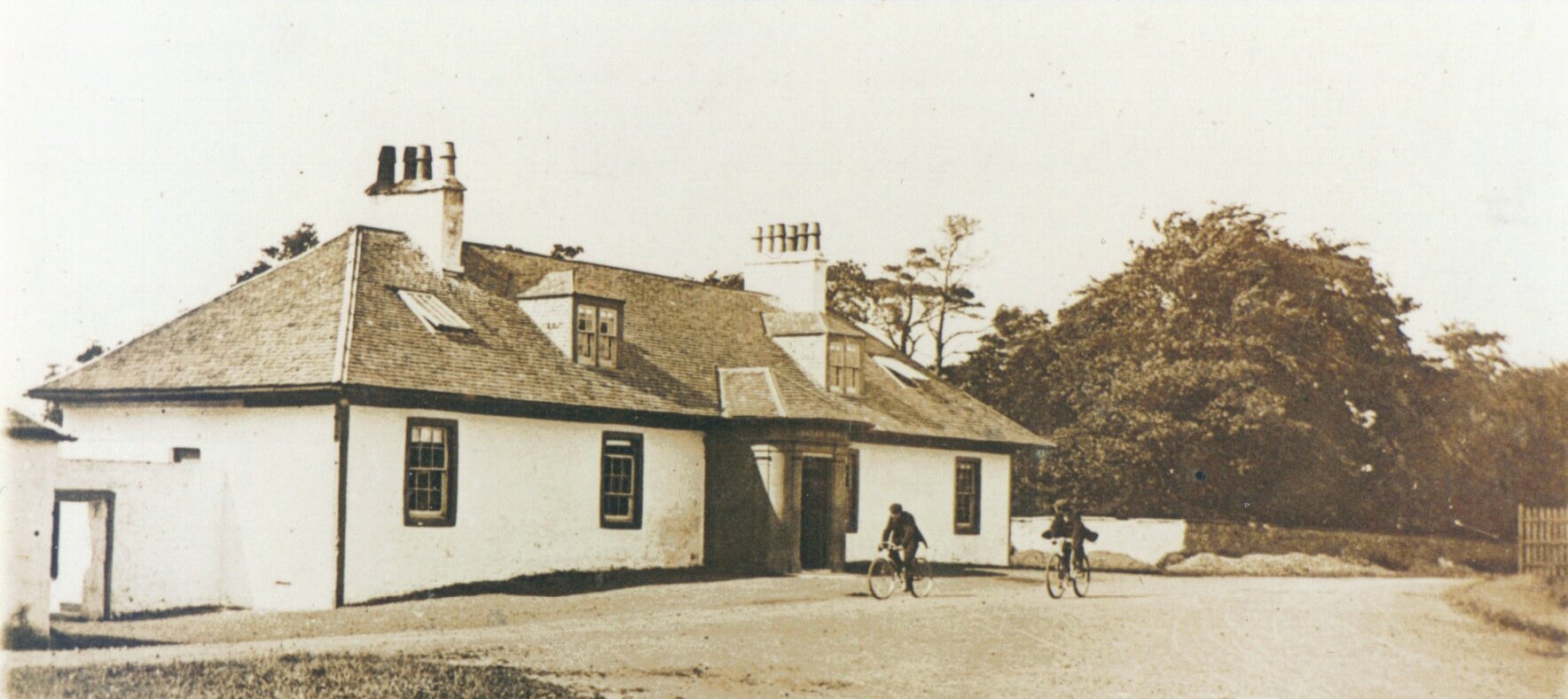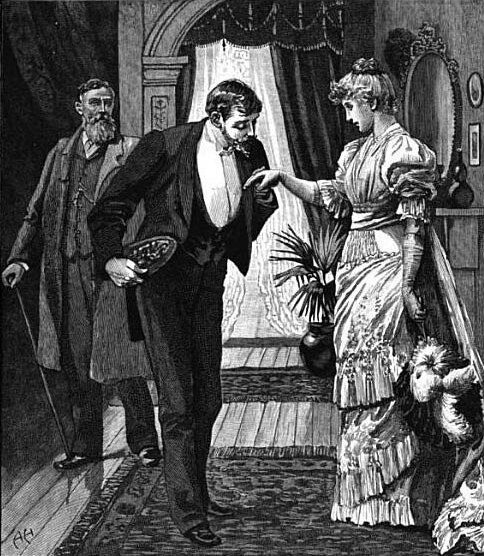Everyday Life in the Industrial Civilization at the Beginning of the Twentieth Century
to describe the changes that have taken place in the family life of Europeans in the 19th century;
to characterize the moral changes that took place in Europe during the nineteenth century, as well as those in the everyday lives of its inhabitants;
to recognize the differences between the European and American family lifestyle.
In the nineteenth century, it was commonly believed that marriage was the best way to stabilize one’s life, especially in the case of women. Marriages were arranged in every social stratum, except for the working class. However, the anonymity of big urban agglomerations gradually increased one’s ability to decide on the matters of their marriage, education, work, and everyday existence. In the nineteenth century, the size of the family diminished, assuming the form of a two‑generational community. This process took place both in the countryside and in the urban areas. In the nineteenth century, having many children was commonplace. The women would usually give birth to over ten children each. The Industrial Revolution and the introduction of production machines caused the mass employment of women. In the urban areas, they would mainly work in the textile, food and tobacco industries. Many sought employment as private domestic staff.
What were the duties of a house servant employed by a middle‑income urban family at the beginning of the twentieth century?
Answer the question by matching the activities listed below to house and personal (associated with one’s self) activities. Based on this, formulate conclusions about the work of house servants.
waking up at 6AM or before, cleaning up the bedroom of the house owners, cleaning the kitchen, shopping (bread, milk), spare time, preparing for sleep, preparing dinner, preparing the table for breakfast, combing one’s hair and dressing oneself, waking up the children, cleaning up the flat, shopping, Kindling the fire in the kitchen, setting the water for tea and coffee, waking up the house owners, making the beds, cleaning after lunch, airing the dining room, making one’s bed, preparing lunch, brief prayer
| Personal activities | |
|---|---|
| House activities |

Study the text and say what changes took place in the family lives of the Europeans in the nineteenth century. What were the differences between the American and European family lifestyles? Was marriage the same for every family?
In the nineteenth century, the family became smaller in size, assuming the two‑generational (or, as the demographers put it, nuclearnuclear) form, consisting of parents and children. This process took place both in the countryside and in the urban areas. It was decided by the capitalist changes, industrialization, and increased social mobility. The family ties that existed in the American society were the weakest; multi‑generational families disappeared quicker than in Europe, and the children left family homes almost immediately after having come of age, no matter whether they were married or not.
In the nineteenth century, having many children was commonplace. The women would usually give birth to over ten children each. In the higher social strata, the children were fed by mammies, while the mothers would rest and gather strength. The women from working‑class, peasant, and craft families returned to work immediately after giving birth. However, the beginning of the twentieth century brought changes. The progress of medicine and visible rise in life expectancy in the whole Europe was of colossal significance for the social and family life. Conscious maternity, children’s hygiene and contraception were promoted. The diminishing of women’s fertility and the mortality of children improved the mothers’ standing in the family, and made it possible for the parents’ (especially the mothers’) to directly participate in raising their children. This was still, however, not the norm – the help of mammies, nannies and tutors was still employed.
In the second half of the nineteenth century – as a manifestation of acknowledgement and acceptance – special children’s clothes started appearing, along with toys, nurseries, and playgrounds. However, the upbringing of the children was dominated by harsh discipline. In every social class, children were often subjected to corporal punishment (with canes and knouts!), as people believed it would strengthen their morality and resolve. It was only at the beginning of the twentieth century when the progressive intelligentsia circles started developing the trend of treating children as partners, as well as raising and teaching them by means of play. The commonplace custom of expecting the children to kiss their father’s hand was absent among the intelligentsia as well.
Listen to the recording. What was the role of balls in the everyday life of the Kingdom of Poland? How did the countryside classes entertain themselves?

What stimulates the imagination of modern people when it comes to the entertainment of the nineteenth century are balls. They took place only during the Carnival, as organizing them out of that period required the consent of the authorities. The whole society awaited the Carnival and the fun associated with it. Those parties lasted until the morning, the better locales even included breakfast in the price of the ticket. In that period, many families from the countryside and the small towns visited the cities, bringing boxfuls of hats, gowns and other clothes, indispensable for any elegant lady, with them. All of it in order to get in touch with the upper world once a year and help the daughters marry an inhabitant of the city. The Carnival was present everywhere: in the newspapers, in the streets, and on posters. The country would become something of a little Venice.

In the countryside, the inns served the purpose of community centers. During the holidays, even in the winter, when there was not much to do, people liked visiting them in order to meet and chat with the others, and listen to amateur fiddle play. When there was no money for a pack of tobacco or vodka, the countryfolk would bring eggs, goose, pots of grain, or potatoes, paying in nature. In the inns, people were curious to meet not only wandering musicians, but also all kinds of travelers who, having come from afar, would bring news. Owing to that, one could learn about the events in the country and in the world, whether the world was about to end or not, or whether there was any war or uprising brewing, without needing to read newspapers. It was a great treat to see the village’s metaphorical Johnny who became a soldier, then came back on a leave in a beautifully colorful uniform. That was one worldly man! He would leave the Partition borders, almost going abroad, and would meet all sorts of people during service, sometimes even getting to see the Emperor himself.

The rules of savoir‑vivre (or the art of behaving correctly in public places) had much more significance back in those times. Entertainment was extremely formal. The codes of savoir‑vivre contained dozens of rules regulating even the most minute spheres of life – how to bow, speak, walk, shop, look, put aside one’s top hat... There were manuals that would go even further and present ready‑made dialogues, providing hints on what to converse about while dancing, going on a walk, or meeting other people in the living room. Not uncommonly, while seeing other people, one had to worry more about being perceived well rather than about having fun.
Nowadays, when we look at the portraits or read the literature of the era, it would seem that the people of those times were extremely refined and had recherché clothes and flawless manners. However, life in those times had its darker side as well. The problem is, paintings do not convey smell... Furthermore, they portray a perfect world, whereas real life rarely matched its image shown in artworks. When someone was posing for his only portrait ever, he would put on his best suit; if he did not have one, he would borrow it. The painters, too, in their kindness, would add golden watches or remove wrinkles and bald patches. Ludwik Solski remembers the wife of a theater’s director, Mrs. Trapszowa, whose shoes were so old that they were becoming green and had holes in the front. She had her ways to remedy that, however. She would prepare the shoe polish, then, “with pedantic precision, she would adapt her toe color to the color of her shoe”.
Based on: “Plotki, bale i skandale - tak się żyło w XIX wieku!”; kobieta.interia.pl
- Parisians resting on the Seine’s bank on Sunday
- torrential rainfall on the Seine
- breakfast on the grass
Mark the truthful sentences.
- Owing to the development of waterworks and canalworks at the turn of the nineteenth century, it became possible to install bathrooms and toilets in the flats.
- Bathrooms and toilets were considered an indispensable element of any flat.
- The number of house servants in the American houses diminished slower than in Europe.
- Since the end of the nineteenth century, the practice of having two separate bedrooms for the husband and the wife became commonplace.
- Marriages were arranged in every social class except in the peasant class.
- In big city aglomerations, unmarried women had to wear humiliating spinster garb.
- In all of the social classes, the children were frequently subject to corporal punishment, as it was believed that beatings would strengthen their morals and resolve.
- The European women, unlike the Americans, would walk through the cities, ride on horseback and travel by train unaccompanied by men.
- The women would give up on earning money if their financial situation permitted it, most commonly after marriage.
Keywords
misalliancemisalliance, nuclear family, tutor, nursemaid
Glossary
mezalians – małżeństwo osób pochodzących z różnych warstw społecznych
rodzina nuklearna– inaczej rodzina dwupokoleniowa
guwernantka – nauczycielka prywatna, zatrudniana w domach zamożnych rodzin mieszczańskich
bona – prywatna opiekunka do dzieci, zatrudniana w domach zamożnych rodzin mieszczańskich